Tools and materials for cleaning ceramic tiles
Instruments
To make cleaning easier, use the right tools. First of all, to clean ceramic tiles, you will need:
- Bucket;
- Soft brush;
- Soft napkin;
- A vacuum cleaner.

Attention! Do not use a hard (iron) bristled brush when cleaning.

Materials (edit)
- Detergent;
- Water;
- Water-repellent impregnation for seams.
Carefully consider the choice of detergent for cleaning ceramic tiles. For its care, those that contain acids (for example, with the addition of chlorine), as well as containing particles of abrasive are not suitable - some types of tiles are quite easily scratched, and this leads to the fact that dirt begins to penetrate into the pores of the ceramic, from where it is almost impossible to remove it ... In addition, cosmetic soaps containing fats and fatty acids can also stain tiles rather than wash them.
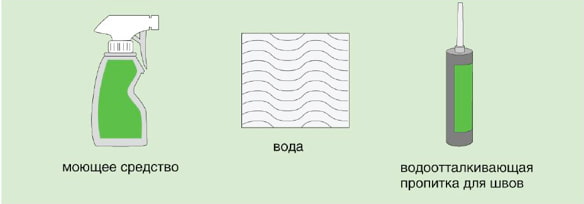
Advice: It is best to treat the tiles with warm water, to which a little ammonia or glass cleaner is added - after such cleaning, the ceramic tiles will shine like new.
How to work when caring for ceramic tiles
Caring for ceramic tiles includes two stages: at the first, coarse dirt and dust particles are removed by a dry method, at the second, the surface is washed clean.
1
Dry cleaning. Before starting to wash the surface, it must be vacuumed, or thoroughly brushed with a soft dry brush, and then collect the swept away debris. This is especially important if the tiles are flooring.
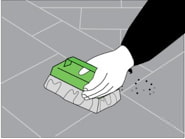
2
Wet cleaning. After applying a mild detergent to a napkin, wipe the surface of the tiles with light circular motions, then rinse it off with warm water with the addition of ammonia. If there are stains on the surface, leave the detergent solution on them for a while, and then additionally wipe with a soft sponge.
Care advice for ceramic tiles: Fat stains can be easily removed with a soda solution, blood stains - with hydrogen peroxide. If the tiles are stained with felt-tip pens, which often happens when there are children in the family, try removing the children's "art" with a solution of ordinary laundry bleach.

3
Finish. At this stage, you can apply a protective coating to the tiles and treat the seams with special compounds to protect against water ingress and prevent mold and mildew growth.
Protective measures against contamination
To facilitate the maintenance of the tiles, you can use measures to protect the tiles from dirt. They can be divided into mechanical and chemical.
- Mechanical. To use less cleaning of your ceramic tiles, place a grate near your front door and a hard-pile carpet behind it. This simple measure will help ease maintenance, trap street dust and sand at the entrance to the apartment.
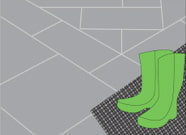
- Chemical. The surface of ceramic tiles can be coated with a special compound that lowers its adhesion - dirt will become less "sticky", cleaning will be less frequent. In addition, tile joints must be treated with a special compound that has water-repellent properties - this must be done at least two to three times a year.
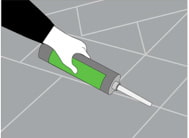
Useful tips for the care of ceramic tiles
- Polish the surface from time to time. To do this, dilute the chalk powder in water until sour cream is thick, and apply to ceramic tiles. Let it dry slightly, then rub it with a dry cloth. After such care, the tiles will shine like new.
- To add shine to tiled surfaces, add ammonia to the wash water (a couple tablespoons per liter of water). After cleaning, wipe off remaining water droplets with a soft cloth or chamois leather.
- Very dirty tiles can be washed with water and vinegar (three tablespoons per liter of water). To remove greasy stains, vinegar essence can also be used, but immediately after the contamination disappears, the tiles must be rinsed with plenty of warm water.

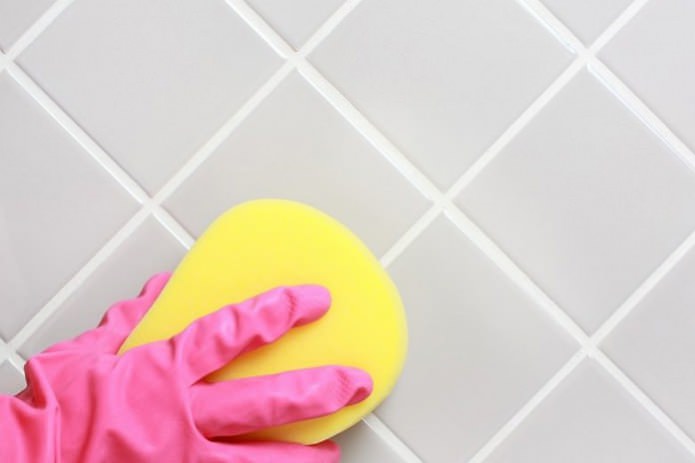
 10 practical tips for arranging a small kitchen in the country
10 practical tips for arranging a small kitchen in the country
 12 simple ideas for a small garden that will make it visually spacious
12 simple ideas for a small garden that will make it visually spacious
 13 bad habits a good housewife shouldn't have
13 bad habits a good housewife shouldn't have 24/7 home cleanliness - 4 secrets for the perfect housewife
24/7 home cleanliness - 4 secrets for the perfect housewife 6 hotels in Sochi that will give odds to the promoted foreign hotels
6 hotels in Sochi that will give odds to the promoted foreign hotels Top 10 interior design trends 2020
Top 10 interior design trends 2020 Rating of cheap TVs with Smart-TV
Rating of cheap TVs with Smart-TV New Year's LED garlands on AliExpress - we disassemble while it's hot, so that it's bright at home
New Year's LED garlands on AliExpress - we disassemble while it's hot, so that it's bright at home